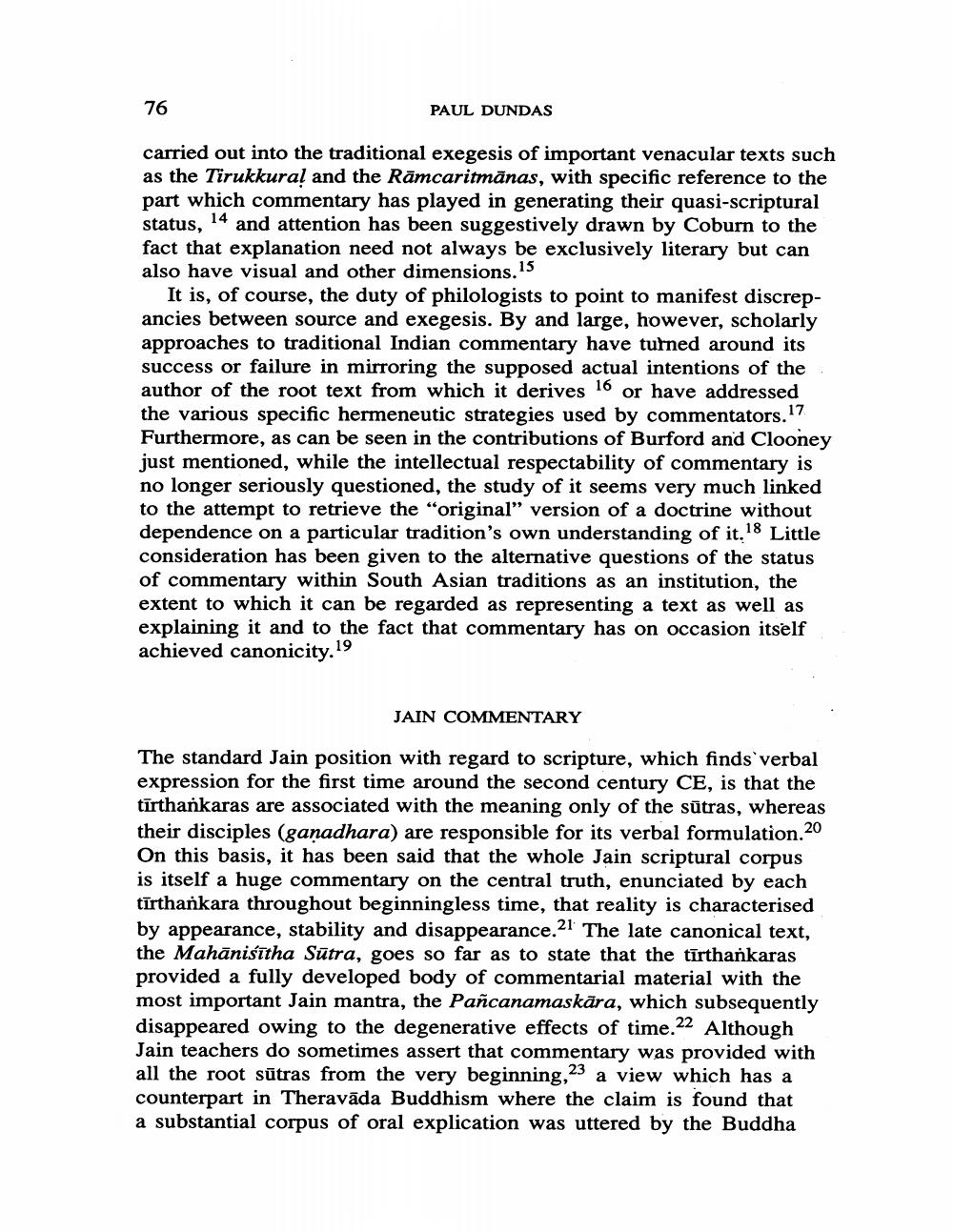Book Title: Somnolent Stras Sriptural Cmmentary In Svetambara Jainism Author(s): Paul Dundas Publisher: Paul Dundas View full book textPage 4
________________ 76 PAUL DUNDAS carried out into the traditional exegesis of important venacular texts such as the Tirukkural and the Rāmcaritmānas, with specific reference to the part which commentary has played in generating their quasi-scriptural status, 14 and attention has been suggestively drawn by Coburn to the fact that explanation need not always be exclusively literary but can also have visual and other dimensions. 15 It is, of course, the duty of philologists to point to manifest discrepancies between source and exegesis. By and large, however, scholarly approaches to traditional Indian commentary have turned around its success or failure in mirroring the supposed actual intentions of the author of the root text from which it derives 16 or have addressed the various specific hermeneutic strategies used by commentators.17 Furthermore, as can be seen in the contributions of Burford and Clooney just mentioned, while the intellectual respectability of commentary is no longer seriously questioned, the study of it seems very much linked to the attempt to retrieve the "original" version of a doctrine without dependence on a particular tradition's own understanding of it. 18 Little consideration has been given to the alternative questions of the status of commentary within South Asian traditions as an institution, the extent to which it can be regarded as representing a text as well as explaining it and to the fact that commentary has on occasion itself achieved canonicity. 19 JAIN COMMENTARY The standard Jain position with regard to scripture, which finds verbal expression for the first time around the second century CE, is that the tīrthankaras are associated with the meaning only of the sūtras, whereas their disciples (ganadhara) are responsible for its verbal formulation 20 On this basis, it has been said that the whole Jain scriptural corpus is itself a huge commentary on the central truth, enunciated by each tīrthankara throughout beginningless time, that reality is characterised by appearance, stability and disappearance.21 The late canonical text, the Mahānisītha Sūtra, goes so far as to state that the tīrthankaras provided a fully developed body of commentarial material with the most important Jain mantra, the Pañcanamaskāra, which subsequently disappeared owing to the degenerative effects of time.22 Although Jain teachers do sometimes assert that commentary was provided with all the root sūtras from the very beginning,23 a view which has a counterpart in Theravāda Buddhism where the claim is found that a substantial corpus of oral explication was uttered by the BuddhaPage Navigation
1 2 3 4 5 6 7 8 9 10 11 12 13 14 15 16 17 18 19 20 21 22 23 24 25 26 27 28 29
